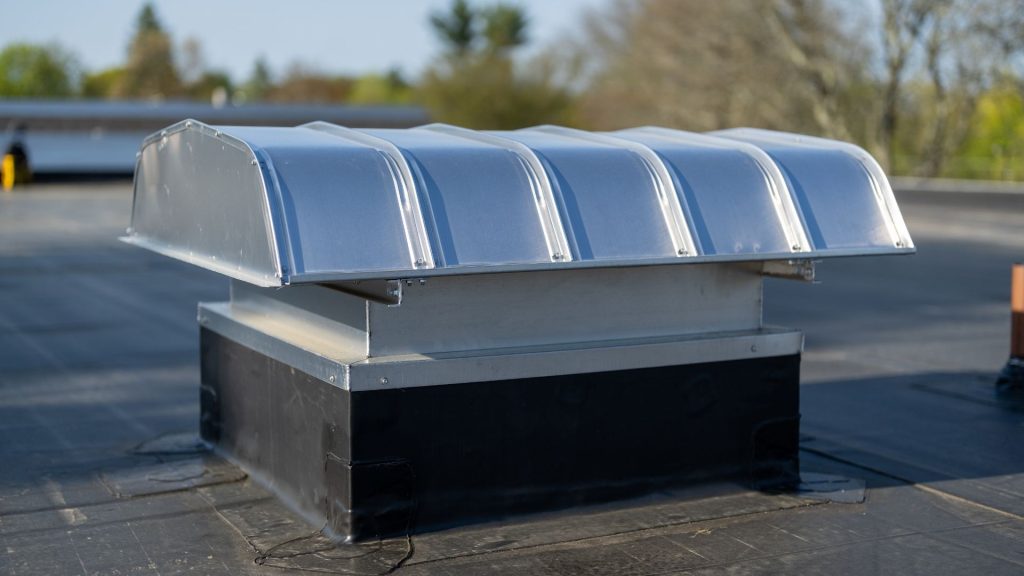When it comes to roofing, homeowners often focus on the visible elements—the quality of shingles, the durability of materials, or the sleekness of metal roofing. While these factors are undoubtedly essential, one critical aspect that might not always be top of mind is ventilation. Proper roof ventilation is a silent hero in ensuring the longevity, efficiency, and health of your roofing system. In this comprehensive guide, we’ll delve into the crucial role of ventilation in roofing, providing insights from the experts at A-Top Roofing.
Understanding Roof Ventilation:
The Basics:
Ventilation refers to the exchange of air in an enclosed space. In roofing, ventilation involves creating a balanced system where air can circulate freely, removing excess heat and moisture. This is typically achieved through the use of intake vents and exhaust vents strategically placed throughout the roof.
Types of Ventilation:
- Intake Vents: These are positioned at the lowest part of the roof and allow fresh air to enter the attic or roofing space.
- Exhaust Vents: Installed near the roof’s peak, exhaust vents facilitate the exit of warm, moist air from the attic.
The Importance of Proper Ventilation:
Temperature Regulation:
- Summer Cooling: Proper ventilation prevents the attic from turning into a heat trap during the summer. Without adequate ventilation, temperatures in the attic can soar, leading to increased cooling costs and potential damage to the roof structure.
- Winter Protection: In colder months, effective ventilation helps prevent the buildup of ice dams. These dams can form when warm air from the living space rises to the attic, melting snow on the roof, which then refreezes at the eaves, causing water backup.
Moisture Management:
- Preventing Condensation: Ventilation is instrumental in controlling moisture levels. Without proper ventilation, condensation can accumulate in the attic, leading to mold growth, wood rot, and compromised insulation.
- Year-Round Benefits: Whether it’s rain, snow, or humidity, a well-ventilated roof ensures that moisture is effectively expelled, preserving the integrity of the roof structure.
Extended Roof Lifespan:
- Reducing Shingle Damage: Excessive heat and moisture can accelerate the deterioration of roofing materials, especially asphalt shingles. Proper ventilation contributes to a more stable climate, protecting shingles from premature aging and damage.
Energy Efficiency:
- Lowering Energy Costs: By maintaining a cooler attic in hot weather, proper ventilation reduces the strain on air conditioning systems. This translates to lower energy bills and a more sustainable home.
A-Top Roofing’s Approach to Ventilation:
Customized Solutions:
- A-Top Roofing understands that every home is unique. Their experts conduct a thorough assessment to determine the specific ventilation needs of each roofing system.
Strategic Placement:
- A-Top Roofing strategically places intake and exhaust vents based on the roof’s design, ensuring optimal air circulation.
High-Quality Ventilation Products:
- A-Top Roofing prioritizes the use of high-quality ventilation products to ensure longevity and effectiveness. This includes ridge vents, soffit vents, and other industry-leading solutions.
Comprehensive System Integration:
- A-Top Roofing integrates ventilation considerations into every roofing project, from repairs to installations. This comprehensive approach ensures that ventilation is not an afterthought but an integral part of the overall roofing system.
Signs of Inadequate Ventilation:
Excessive Heat in Attic:
- If your attic feels excessively hot, especially during the summer, it could be a sign of inadequate ventilation.
Mold or Mildew Growth:
- The presence of mold or mildew in the attic indicates moisture-related issues that proper ventilation could address.
Ice Dam Formation:
- If you notice the formation of ice dams on your roof in winter, it may be due to inadequate ventilation causing uneven temperatures on the roof.
Premature Shingle Wear:
- Shingles that show signs of premature wear, curling, or cracking may be experiencing excessive heat and moisture, emphasizing the need for improved ventilation.
Conclusion: Elevating Your Roofing System with A-Top Roofing’s Ventilation Expertise
In the realm of roofing, ventilation is the unsung hero that plays a pivotal role in maintaining a healthy and efficient system. A-Top Roofing’s commitment to understanding the unique needs of each roofing project ensures that ventilation is not overlooked. By implementing strategic solutions, using top-quality products, and integrating ventilation considerations into every phase of a project, A-Top Roofing stands out as a leader in promoting the longevity and sustainability of roofing systems.
If you’re considering a roofing project or have concerns about your current roof’s ventilation, contact A-Top Roofing Ltd. at 778-874-0421 or [email protected]. Experience firsthand the difference that proper ventilation can make in preserving the integrity of your roof and enhancing the overall performance of your home. A-Top Roofing: where expertise meets excellence in roofing ventilation.

